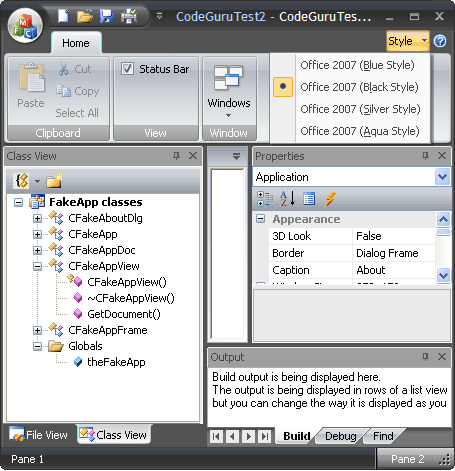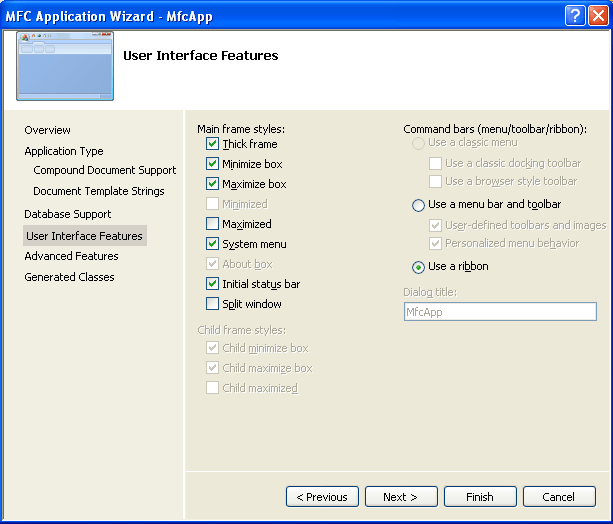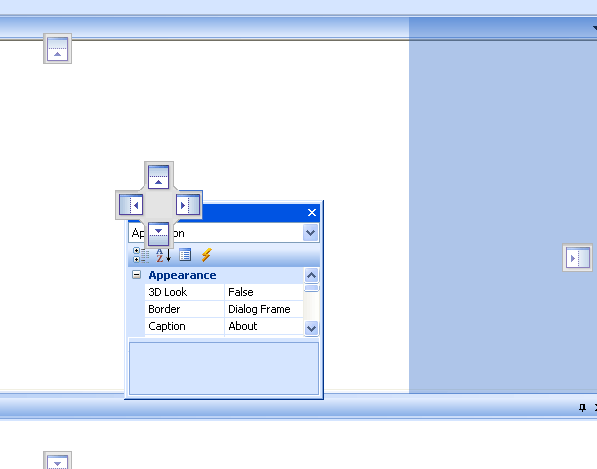As Microsoft
promised last year, the focus for
Visual C++
2008
features going forward is development in
native code and code that spans the gap
between the native and managed worlds.
Keeping full-feature parity with
managed-only languages like
C# and
Visual
Basic.NET does not make a lot of sense for
Visual C++ 2008 as a product, because focusing on
managed-feature parity distracts from the
areas where Visual C++ stands alone as a
product: native and interoperability coding.
Visual C++ 2008 provides strong proof for
Microsoft's renewed commitment to native
code, with significant
MFC updates providing
full support with the Windows common control
library for the first time in a decade. Not
content with merely covering Windows, the
Visual C++ team has released the Visual C++
2008 Feature pack (
available for download here) that
provides built-in support for developing
applications that have
Visual Studio- and
Microsoft Office-like user interfaces. As
this article on the
MSDN web site explains, the
MFC update
has been completed with an external company
(BCGSoft)
partnering with Microsoft's
Visual C++ team.
Installing the Beta of the
Visual C++
2008 Feature Pack can be a little tricky;
the installer has a bug that terminates the
installation if a full installation of
Visual Studio 2008
is not present OR the
original media from where Visual C++/
Visual
Studio has been installed is not available.
The simplest workaround is simply to put the
Visual Studio 2008 DVD in the disc drive or
ensure that network access to the original
Visual Studio installation location is
available. In addition, the 303MB download
of the Feature Pack does not include any
documentation, and a separate 3MB download
is required
from MSDN to gain access to the two CHM
files that describe the new features.
The Feature Pack is divided into two
distinct areas of functionality:
MFC updates
and TR1 functionality. TR1 is a set of
additions to the C++ language that are an
interim step towards the new features set to
be formally adopted as part of C++ in the
C++0x release (0x designating that the new
standard is expected to be adopted this
decade). TR1 is more fully described in this
MSDN blog post, and will be covered in
depth in an upcoming article.
MFC Updates
Since Visual C++ 6
was released in 1998,
MFC went into a gradual decline, where the
features of controls released as part of the
Windows operating system where not included
in subsequent MFC releases as they had been
in the days before .NET. With
Visual C++
2008, MFC received a major update,
as covered previously. With the Feature
Pack, the update of
MFC continues, and the
development of an application that looks
good running on the Vista operating system
and next to applications such as Internet
Explorer 7 and Office 2007 is easy. To gain
a quick appreciation of what an
MFC
application built using the Feature Pack
looks like, running the samples gives a
strong indication that this isn't your
grandfather's MFC.
Figure 1 shows the MSOffice2007Demo
sample application that ships with the
Feature Pack. At a casual glance, the
application would easily pass as part of
Office 2007, and the fact that this is a
MFC
application without any third-party controls
and without hundreds of lines of owner-drawn
GUI hacks is stunning considering how dated
MFC used to look compared to its Windows
Forms and WPF cousins.
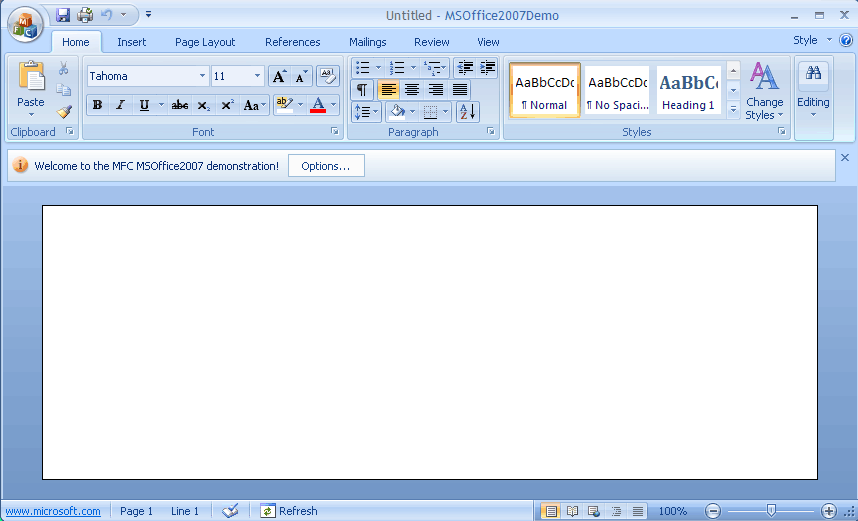
Figure 1: MSOffice2007Demo sample
application.
Even though there a number of new UI
elements shown in Figure 1, the Ribbon
control is the most obvious update that
instantly delivers the wow-factor to the
application. A ribbon control offers a huge
range of functionality to a user, and trying
to implement a ribbon control from scratch
is a massive undertaking. To gain some sense
of the complexity involved in the
MFC ribbon
implementation, there are 25 separate CPP
files that make up the ribbon control
implementation, and they weigh in at a
massive half a megabyte of source code.
Upgrading an existing application to move
from a standard menu and toolbar UI to a
ribbon-based UI is not an overly difficult
undertaking. The main tucancode.net is adding
CMFCRibbonBar and
CMFCRibbonApplicationButton member variables
to the applications CMainFrame class, and
then adding a CMFCToolBarImages member
variable to hold the various images that
will be shown on the ribbon. Each tab on a
ribbon (like the Home, Insert,
and Page Layout tabs in Microsoft
Word 20007) are referred to as a category,
and new categories are added to a ribbon by
calling the CMFCRibbonBar::AddCategory
method, which takes a large and small icon
strip.
In addition to the new member variables
needed in the CMainFrame class, most of the
base classes in the MFC-generated code need
to be modified to use the new style Ex
clases; CWinAppEx, CMDIFrameWndEx,
CMDIChildWndEx, and CSplitterWndEx all need
to be substituted for their non-Ex versions.
Because the new Ex classes are all derived
from the non-Ex versions, the impact on an
application is fairly minimal.
Thankfully, the MFC application wizard
also isupdated by the installation of the
Visual C++ 2008 Feature Pack, and it is
possible to generate an Office-2007–like
application with full ribbon support
directly from the application wizard. Within
the MFC app wizard, the Application Type
step has been updated with the inclusion of
a number of new Visual Style and Colors, as
shown in Figure 2.
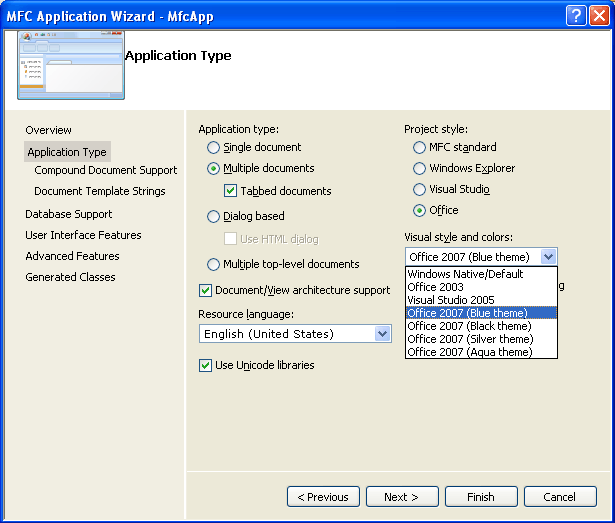
Figure 2: Visual Styles for a new
MFC Application






